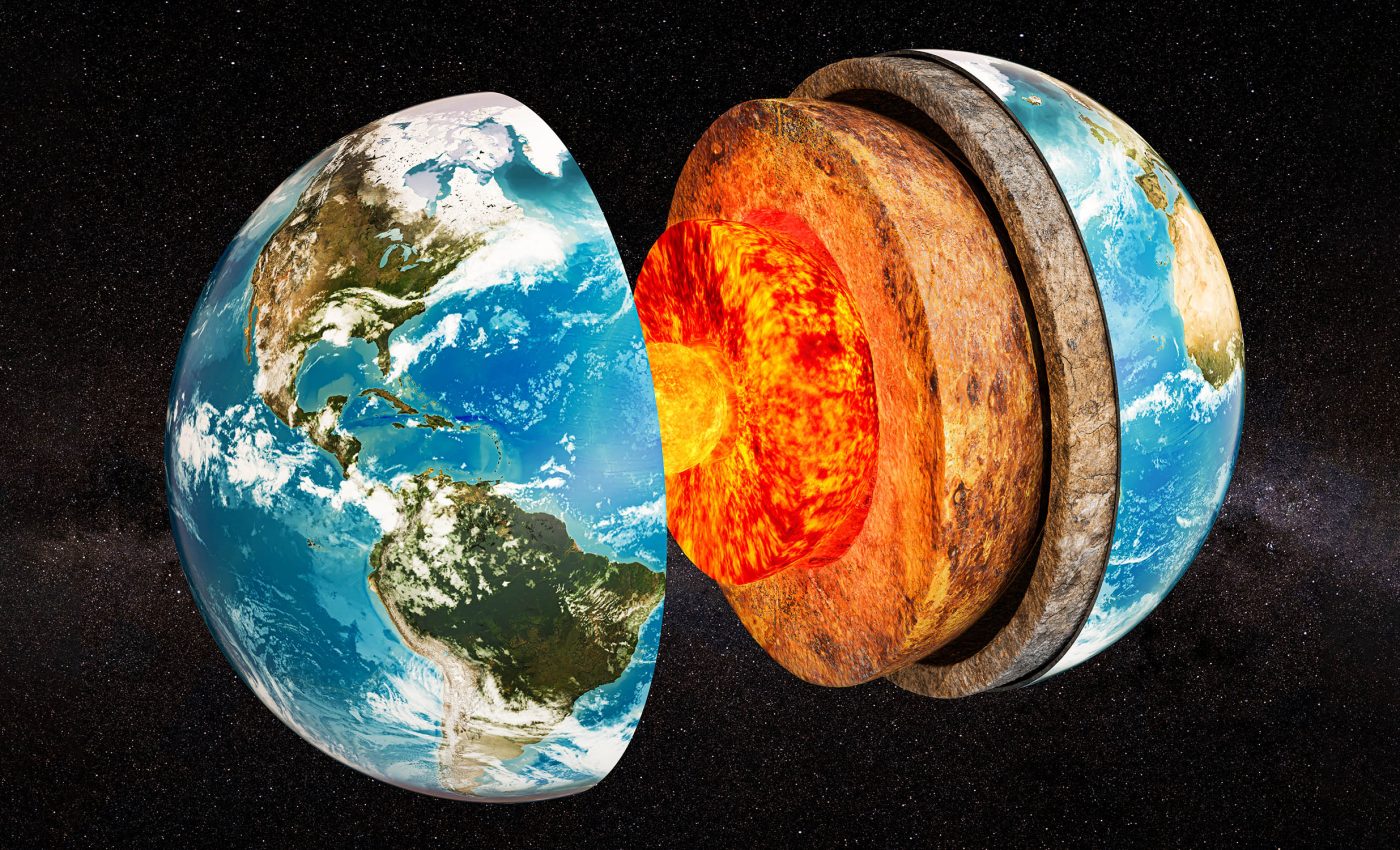
Record-breaking hole drilled into the Earth’s mantle is a scientific goldmine
In what can only be described as a herculean accomplishment, a team of scientists has succeeded in bringing to the surface a long, 1,268-meter section of rocks from the Earth’s Mantle. This layer, hidden beneath the crust, forms the largest chunk of our planet.
The insights gained from this discovery open doors to a profound understanding of our planet’s inner workings, offering a peek into life’s origins, the causes behind volcanic activities, and the global cycles of elements vital to our existence such as carbon and hydrogen.
Understanding Earth’s interior
The Earth is composed of four primary layers: the crust, mantle, outer core, and inner core. At the surface, we find the crust, which is thin and solid, primarily made of rock, representing the layer where we reside.
Below the crust lies the mantle, a substantial layer of semi-solid rock that flows gradually over time. This dynamic layer is crucial, as it drives the movement of tectonic plates, resulting in earthquakes and volcanic activity.
Delving deeper, the outer core consists of liquid metal, predominantly iron and nickel, and is responsible for generating Earth’s magnetic field through its movements.
At the very center, we encounter the inner core — a dense, solid sphere of iron and nickel. Despite enduring extreme heat, the extraordinary pressure keeps this inner core solid.
Each layer not only contributes to the structure of our planet but also plays a vital role in processes that shape our environment.
Unprecedented achievement
At the forefront of this remarkable feat is Professor Johan Lissenberg from Cardiff University’s School of Earth and Environmental Sciences.
The mantle rocks were procured from a tectonic window on the Mid-Atlantic Ridge during Expedition 399 of the JOIDES Resolution, appropriately titled “Building Blocks of Life, Atlantis Massif,” in spring of 2023.
This accomplishment marks an epoch in Earth sciences. The international team, operating under the International Ocean Discovery Program (IODP), has secured these ancient rocks for detailed analysis. They will now serve as keys to our understanding of Earth’s geological and biological history.
Deciphering the many layers of Earth’s mantle
The rock samples are far from ordinary. Their unique makeup reveals secrets of processes that took place as these rocks ascended from the deep recesses of the Earth to the surface.
Professor Lissenberg notes, “Our study begins to look at the composition of the mantle by documenting the mineralogy of the recovered rocks, as well as their chemical makeup.”
Interestingly, they contain less of the mineral pyroxene and more magnesium than anticipated. This points to the mantle undergoing considerably more melting than previously believed, which in turn, helps explain how magma forms and eventually leads to volcanic eruptions.
From Earth’s mantle to volcanic eruptions
Pathways discovered within these rock samples indicate the routes magma took towards the Earth’s surface.
These revelations underscore a better understanding of how magma originates in the mantle, moves upwards, and eventually powers volcanic eruptions.
“This is important because it tells us how the mantle melts and feeds volcanoes, particularly those on the ocean floor that account for the majority of volcanism on Earth,” explains Professor Lissenberg.
Understanding this interplay between mantle melting and volcanic activity is a critical piece in Earth’s geological puzzle.
Foothold on the origins of life
The mantle rocks offer key insights not just into geological processes, but also into how life on Earth might have originated.
The mineral olivine, abundant in mantle rocks, reacts with seawater to produce hydrogen and other molecules – a process potentially fundamental to the creation of early life conditions.
Dr. Susan Q. Lang from the Woods Hole Oceanographic Institution underscores the importance of this breakthrough.
“The rocks that were present on early Earth bear a closer resemblance to those we retrieved during this expedition than the more common rocks that make up our continents today,” she shares.
This discovery offers a glimpse into conditions billions of years ago.
Further exploration of Earth’s mantle layer
The journey of the Expedition 399 team is far from complete. The international group, comprised of more than 30 scientists, will continue to examine the mantle samples to unravel a myriad of scientific mysteries.
Dr. Andrew McCaig, the co-chief scientist of the expedition from the University of Leeds, sheds light on the extensive implications of this research.
“Our new deep hole will be a type section for decades to come in disciplines as diverse as melting processes in the mantle, chemical exchange between rocks and the ocean, organic geochemistry, and microbiology,” McCaig concluded.
Window into the past, present, and future
The recovery of mantle rocks from the ocean’s depths is not just a landmark scientific achievement; it’s a giant leap towards untangling the intricate mysteries of our planet.
As scientists like Professor Lissenberg, Dr. Lang, Dr. McCaig, and their colleagues continue to delve into the data, they’re not just increasing our understanding of Earth; they’re also reshaping our perception of our planet and our place within it.
It is awe-inspiring to realize that somewhere, deep beneath our feet, the answers to some of life’s grandest questions lay shrouded in mystery.
The team’s relentless pursuit of knowledge, their spirit of collaboration, and their unending curiosity serves as a reminder of scientific exploration’s endless potential.
The full study was published in the journal Science.
—–
Like what you read? Subscribe to our newsletter for engaging articles, exclusive content, and the latest updates.
Check us out on EarthSnap, a free app brought to you by Eric Ralls and Earth.com.
—–













